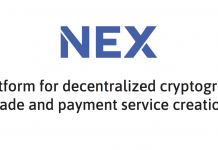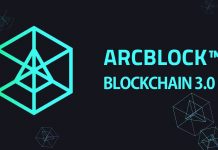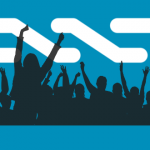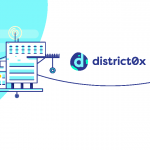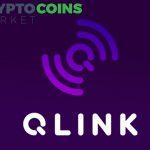Omega One is an exchange using its own reserve as well as liquidity from centralized exchanges to shield members from risk and reduce trading costs.
PROJECT OVERVIEW.
Omega One is a decentralized order book style exchange using its own reserve as well as liquidity from centralized exchanges to shield members from risk and reduce the costs of trading.
BACKGROUND.
Cryptocurrency markets have seen a major increase in valuations and a tenfold increase in average daily volume in the past year. This growth is stressing the crypto markets, which are still immature, and have structural liquidity and are open to hacking.
If the markets were liquid, it would be cheap to move in and out of positions, so large volumes could be traded without moving the price very much. This would not only be good for traders, but good for the market as a whole, as it would dampen booms and busts, and encourage market maturity. However, with liquidity costs orders of magnitude higher than in traditional markets ($1m moves the market 10% in BTC/ETH, vs. 0.01% in USD/EUR), the crypto markets will need to mature extremely quickly or risk breaking under the weight of incoming capital.
Just a few days ago, the price of ether “flash-crashed” by over 99.9% in less than a second on GDAX, one of the largest cryptocurrency exchanges. This was due to a multi-million dollar sell order being placed on the exchange. Because the exchange did not have enough buy orders on its books to accommodate a sell this large, the price crashed immediately from $317.81 to $224.48; this movement was enough to then trigger a wave of about 800 automatic position liquidations due to margin calls and stop-loss orders, driving the price briefly as low as $0.10, and causing GDAX to suspend trading.
This is only the most recent of a series of similar events across crypto exchanges, and rather than being a reflection on GDAX in particular, it’s a symptom of the underlying problems created by the stress of capital flow increasing faster than market infrastructure development.
Although the price quickly returned back above $300, the millions of dollars that investors lost due to forced selling of their positions will not be recovered. This incident highlights the relative immaturity of the cryptocurrency trading ecosystem, which has been stressed by a 20x increase in daily trading volume since the start of 2017 without any fundamental change in market structures.
Fortunately, this problem can be solved, and has been solved before in traditional markets, through the intermediation of agency brokers. These entities enable clients to access liquidity more efficiently by breaking down large orders into small pieces, placing them on multiple exchanges over time, and implementing complex game theory to minimize liquidity costs.
Omega One will play this role in crypto markets, with the addition of a trust intermediation layer that protects clients from exchange risk.
HOW IT WORKS.
When an Omega One member wishes to trade between, say, two Ethereum standard (“ERC20”) tokens on the Ethereum blockchain, they will lock some of token A in an Omega one smart contract and send Omega One an order to trade to token B, within certain constraints of time and price.
Omega One will then take on a token B position in the market using it’s exchange accounts and funds, then trade directly with the member as an atomic (simultaneous) swap of tokens in the smart contract.
The combined benefit of harvesting liquidity using Omega One’s algorithms and the trust benefit of leaving member funds on the blockchain protects members from the counterparty risk of the exchanges.
OMEGA TOKEN USES.
- Membership: To gain access to the platform, a member must have a minimum OMT balance. Higher balances will give access to premium levels of service.
- Fee Payment: Trading fees can be paid with OMT, at a discount to normal rates.
- Execution Priority: The size of a member’s OMT holdings will impact their execution priority, resulting in faster execution and lower liquidity costs.
- Discounted trading: Large OMT balances provide further discounts to trading fees.
COMPETITORS.
Ox protocol.
0x is a protocol facilitating the creation of decentralized exchanges (called relayers) that host off-chain order books. 0x already has the protocol launched and working, plus 3-4 exchanges based on 0x are coming up. There are many networks to use it such as District Ox, OpenAnxe, etc.
ZRX is used to pay matching fees to relayers and it will be required to vote on the development of the protocol once the governance system is put into place.
Coinmark cap opening date: Aug 16, 2017.
Coinmark cap opening price: $ 0.111725.
Coinmarkt cap current price: $ 0.197786.
Air swap
Air Swap DEX is using their exchange protocol called Swap. (ERC-20 only). Counterparties discover each other through an off-chain service known as an Indexer, and subsequently negotiate orders directly peer-to-peer. AIR tokens serve as a membership token.
Air Swap eliminates all the risks associated with traditional token exchanges, because there is no central authority to facilitate the transaction. Every transaction is autonomously moderated by a smart contract.
When a trade is executed, tokens are swapped instantly between the parties—there is no moment in time where a third party has access to either the buyer’s or the seller’s funds, making Air Swap the truest peer-to-peer network available to blockchain users.
Air Swap also allows its users to build storefronts, marketplaces, and auctions on its decentralized network. Because of this factor, users are able to construct business and commerce models on the blockchain. If you set up an online t-shirt company through Air Swap, then the payments your customers make to you will not need to be facilitated by a central authority such as a bank.
Air Swap is designed to act as a neutral engine of growth for the new and exciting token economy.
Kyber.
KyberNetwork allows transactions between paying parties and recipients who don’t have access to the same digital currency. Interoperability protocols will grant incompatible blockchains the means to form a viable ecosystem.
Smart contracts ensure that the transactions are secure and trustless. The execution of conversion is decentralized and it is instantaneous. The platform also provides APIs for payment that ensures that a merchant will receive the payments in Ether irrespective of the token that was used by the customer to make the payment.
Kyber Network manages to make conversions and trading instantaneous because they hold a reserve warehouse with the appropriate amount of various cryptocurrencies. A Kyber contract controls the reserve. The platform has been designed to allow new coins to be added in the future.
Coinmark cap opening date: Sep 24, 2017.
Coinmark cap opening price: $ 1.85.
Coinmarkt cap current price: $1.72.
OmiseGo
OmiseGo a white label wallet protocol that will use Plasma to trade p2p off-chain. This technology allows for real-time, peer-to-peer exchanges and payments. It promises to work “agnostically” across jurisdictions and organizational silos, and across both fiat money and decentralized currencies.
The goal of OmiseGO is to make it cheaper to send and receive payments, and cheaper to exchange currencies – whether you’re dealing with fiat currencies or cryptocurrencies.
OmiseGO has not yet been launched. However, it’s scheduled for launch later this year.
Coinmark cap opening date: Sep 07, 2017.
Coinmark cap opening price: $11.65.
Coinmarkt cap current price: $8.35.
What’s its difference with competitors?
Omega One is a hybrid, it will pool liquidity from many exchanges. It tries to solve liquidity issues for institutional investors (hedge funds, banks). Crypto markets are not yet institutional friendly; one hedge fund could influence the market by itself now.



